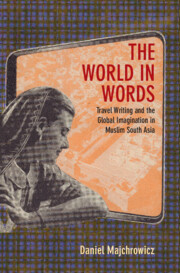5 - Seeking Sisterhood
Published online by Cambridge University Press: 28 February 2023
Summary
In 1936, Qaisari Begum (1888–1976) finally found her chance to go on hajj, but it was not going to be easy (Figures 5.1 and 5.2). The hardest part of the journey was leaving Hyderabad. She had to manage it all herself. Her husband tried to stop her; her family members dissuaded her. She sold some property to fund the trip, but the transfer was delayed. She also lacked an appropriate male companion. But she persevered and, finally, she reached the Holy Cities. She was enraptured: “I was so happy I was barely conscious. What I felt at that time is indescribable.… I leave it to you all, my readers, to imagine it yourselves.” Qaisari Begum’s exultations extended even to her human encounters. She was elated to meet Muslims from around the world. The Egyptians, the Syrians, the Turks, they all seemed radiant and beautiful to her. The sight of this community—her community—filled her heart and reinvigorated her faith. How do we locate this effusive emotion and intense celebration of the Muslim community historically? Had Indian pilgrims always imagined themselves as part of a global Muslim community in this way, or was it created, in part, through travel writing?
Indian Muslims in the Muslim World
Since the 1890s, Urdu travel writers have lavished more attention on the Middle East than on any other region barring India itself. As European imperialism neared its global crescendo, Urdu authors increasingly grappled with the concept of the “Muslim world,” which they often referred to as the bilad-i Islamiyya (the Muslim countries). Through their travels, they gave a concrete definition to the bilad-i Islamiyya and asked what it might mean to be part of a global community united by creed. This idea reflected a shift in Indian writing about the Middle East (itself a term that only emerged in English in the nineteenth century). For Indians, the lands between Iran and Egypt had once been more of an idea—distant regions where important historical events had occurred—than a geographically known place. By the turn of the twentieth century, though, it had taken on a definite geographical shape, partly because huge numbers of Indians were now visiting the region on increasingly safe and affordable steamships, whether as pilgrims, in transit, or on business.
- Type
- Chapter
- Information
- The World in WordsTravel Writing and the Global Imagination in Muslim South Asia, pp. 160 - 188Publisher: Cambridge University PressPrint publication year: 2023



